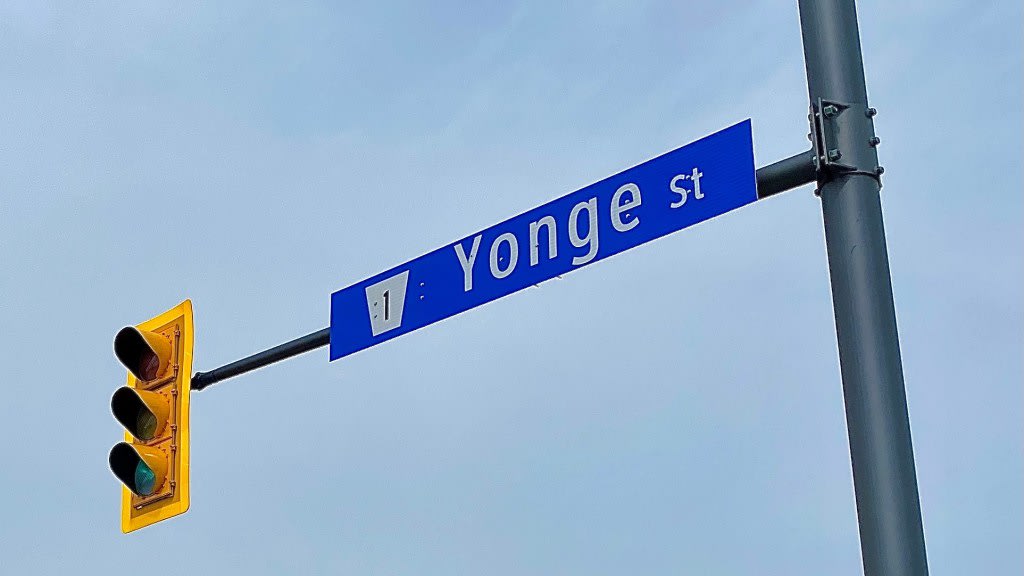Environmental assessment for the Yonge North Subway Extension
Experts are collecting valuable data for environmental studies for the Yonge North Subway Extension.
May 19, 2021
When transit planners and designers set out on a project like the Yonge North Subway Extension, they need to see the path ahead from every level and every angle. To do that, experts need to investigate how all the things that exist today could be affected by – or could affect – the new transit Metrolinx is building for tomorrow.
This includes a full environment assessment underway, as well as valuable insights from those who live and work in neighbourhoods the project touches.
The extension will make it faster and easier for people across the region to get around by bringing TTC Line 1 subway service roughly eight kilometres north to the Richmond Hill Centre area. The project will connect four cities along the route – Toronto, Vaughan, Markham and Richmond Hill – and create a major transit hub at the Highway 7/Highway 407 corridor that will give riders more ways than ever to move around the Greater Toronto and Hamilton Area.
The iconic ‘Yonge St.’ sign above the Bayview Glen intersection. (Metrolinx photo)
Transforming the commute for thousands of people – an estimated 94,100 customers will ride the extension daily by 2041 – is no small job. The project includes underground stations and tunnels, surface-level stations and tracks, along with signals and other structures that will help support reliable and safe subway service from one end to the other.
Experts are now doing detailed studies of the surrounding environment to get a thorough understanding of any potential environmental changes that might happen throughout the lifetime of the project. This process is called an environmental assessment, or an EA. The EA will assess any changes to the environment since the last environmental studies for the project were done in 2009 and evaluate the updated route.
The EA includes a broad range of studies that take a close look at how the project might affect things like wildlife and their habitat, air quality, and local traffic patterns while the extension is being built and after it is up and running. In addition, studies will be conducted to learn of potential effects the project may have on buildings and places that are important to cultural heritage. A detailed review of historical records will also be done and complemented by on-site surveys to determine if areas along the extension have potential for archaeological finds.
Archaeological assessments are planned for the project and could include opportunities for Indigenous monitors to take part in field work to commemorate the history of the area, which is the traditional territory of many Indigenous Nations, including the Anishnabeg, the Haudenosaunee and the Wendat Peoples, and is on the treaty territories of the Mississaugas of the Credit First Nation and Williams Treaties First Nations. Consulting with Indigenous Nations. Involving them in the EA process is essential to gaining a complete understanding of how the latest plans for the project might affect Aboriginal and Treaty rights holders.
As environmental studies continue, Metrolinx will reach out to neighbouring communities along the route to get input on solutions being recommended to avoid or reduce potential impacts. One of the most important factors, especially for people who live along proposed transit routes, is how Metrolinx will design the project to keep neighbourhoods peaceful and quiet.
“The detailed studies we’re doing right now will help inform what solutions need to be put in place to help reduce noise and vibration impacts,” says James Francis, Metrolinx manager, Environmental Programs and Assessment. “Our aim is to make sure there are no significant differences between the levels of noise and vibration experienced in neighbourhoods along the extension today compared to when the subway extension up and running.”
Residents will be able to provide their input across a wide array of channels and engagement sessions that will support the environmental assessment process. For example, live are being held regularly to share the latest project updates and allow people to submit their questions and comments to leaders on the project team. Residents can also submit their input via email, or through a dedicated forum on Metrolinx Engage, which serves as a hub for EA-related information. That feedback, along with the findings of the environmental studies, will be used to prepare a comprehensive report on how potential impacts of construction and operation of the extension will be managed. This report is planned to be made available this fall for review and comment.
To learn more about the EA and how your input will inform the work Metrolinx does to move the Yonge North Subway Extension forward, sign up to participate in a live Virtual Open House tonight (May 19) from 6:30pm – 8:00pm.
Interested in another recent Yonge North Subway Extension feature? Here’s one
by James Moore Metrolinx communications senior advisor
